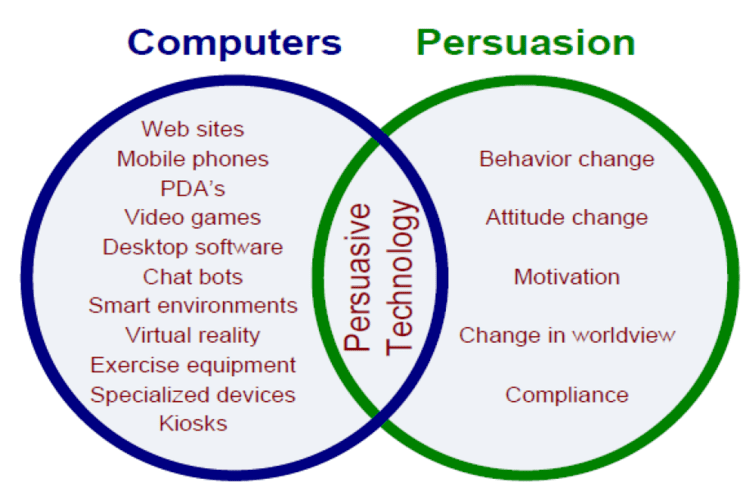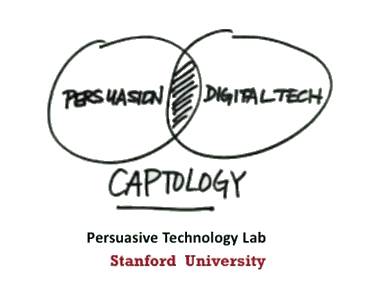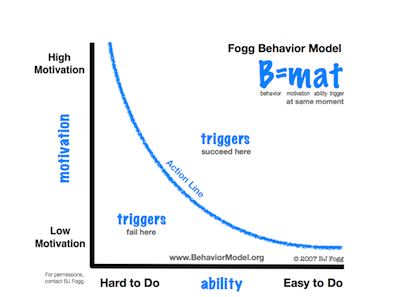 | ||
Bj fogg individuals must change habits for better health
Persuasive technology is broadly defined as technology that is designed to change attitudes or behaviors of the users through persuasion and social influence, but not through coercion. Such technologies are regularly used in sales, diplomacy, politics, religion, military training, public health, and management, and may potentially be used in any area of human-human or human-computer interaction. Most self-identified persuasive technology research focuses on interactive, computational technologies, including desktop computers, Internet services, video games, and mobile devices, but this incorporates and builds on the results, theories, and methods of experimental psychology, rhetoric, and human-computer interaction. The design of persuasive technologies can be seen as a particular case of design with intent.
Contents
- Bj fogg individuals must change habits for better health
- Skillshare course persuasive technology
- Functional Triad
- Direct interaction v mediation
- Persuasion design
- Reciprocal equality
- Health behavior change
- References

Skillshare course persuasive technology
Functional Triad

Persuasive technologies can be categorized by their functional roles. B. J. Fogg proposes the Functional Triad as a classification of three "basic ways that people view or respond to computing technologies": persuasive technologies can function as tools, media, or social actors – or as more than one at once.

Direct interaction v. mediation

Persuasive technologies can also be categorized by whether they change attitude and behaviors through direct interaction or through a mediating role: do they persuade, for example, through human-computer interaction (HCI) or computer-mediated communication (CMC)? The examples already mentioned are the former, but there are many of the latter. Communication technologies can persuade or amplify the persuasion of others by transforming the social interaction, providing shared feedback on interaction, or restructuring communication processes.
Persuasion design
Persuasion design is the design of messages by analyzing and evaluating their content, using established psychological research theories and methods. Andrew Chak argues that the most persuasive web sites focus on making users feel comfortable about making decisions and helping them act on those decisions.
Reciprocal equality
One feature that distinguishes persuasion technology from familiar forms of persuasion is that the individual being persuaded often cannot respond in kind. This is a lack of reciprocal equality. For example, when a conversational agent persuades a user using social influence strategies, the user cannot also use similar strategies on the agent.
Health behavior change
While persuasive technologies are found in many domains, considerable recent attention has focused on behavior change in health domains. Digital health coaching is the utilization of computers as persuasive technology to augment the personal care delivered to patients, and is used in numerous medical settings.
Numerous scientific studies show that online health behaviour change interventions can influence users' behaviours. Moreover, the most effective interventions are modelled on health coaching, where users are asked to set goals, educated about the consequences of their behaviour, then encouraged to track their progress toward their goals. Sophisticated systems even adapt to users who relapse by helping them get back on the bandwagon.
